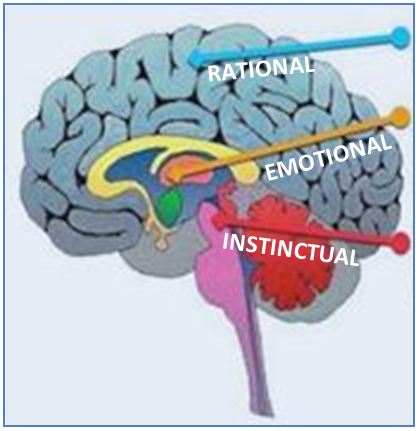First, let’s define what hot buttons are. Hot buttons are triggered responses to something we have perceived.
What do we mean by responses to something we have perceived?
Perceptions, in a short workable definition, are a result of our beliefs and environmental conditioning. Our beliefs are formed over time, starting at a very young age, based on our observations. These observations are, over time, more and more made to fit within our expanding beliefs system. Environmental conditioning is similar, in that it defines the normal boundaries that we operate in because we observe what is generally considered normal in our surroundings. Think of generational behaviors and attitudes. It is very common for the beliefs and attitudes of the family and social environment to be reflected in the next generation as they grow up. It is also common for the next generation to be very purposeful in denying, resenting or rallying against these generational beliefs and attitudes.
All of these things are part of our individual survival strategies. We make judgments. And, as judgments are part of our survival strategies, we tend not to question them. In fact, we tend to look for reasons to justify our judgments.
That is the essence of what we all deal with every day. Look at the tension and stress that is being expressed all around you. Sometimes with words, other times with body language, and most often in fairly subtle ways. These subtle signals tend to be, at the same time, obvious, hard to criticize and easy to deny.
This is where the complexity of being a normal person in a society comes from. Now imagine not being in the majority, whatever the reason. The subtle signals may not be as clear to you. The social and generational norms may not be familiar to you. There will likely be some degree of feeling like you just don’t quite fit. In addition, there may also be a feeling by those who are in the majority that you don’t quite fit.
Add to this the tendency to justify reactions rather than observe and consider what is motivating them and the straight forward principals discussed above become chaotic, perhaps even overwhelming. In addition, the greater the stress, fatigue or uncertainty the more easily escalations can occur. In a culture where escalation is seen as normal, or at least understandable, the tension builds and distances between people and groups grow. But because it is seen as the norm, change is seen as risk. This is a main reason why the suggestion of learning how to manage and build a healthy communication culture tends to be met with avoidance. This is unfortunate given how easy these issues are to overcome. Why is it easy? Because people’s basic human nature is to support and cooperate with each other, it goes back to basic survival skills. Not that long ago we had to depend on others in our group to enhance our chances of survival. That’s why, especially in challenging times, we tend to see the value in banding together. Of course, this is provided the culture in our surroundings supports this behaviour. Or, to put it bluntly, provided we are operating in a healthy communication culture. On the other end of the spectrum is an adversarial culture.
Consider this example. Professional team sports as a model for business. In team sports there is competition in pursuit of reward therefore it’s adversarial by definition. The same is true in business. However, if an adversarial culture exists within the sports team they are less likely to succeed. Again, the same is true in business.
So the question is, how do you build a healthy communication culture within our team so that you will be more competitive in pursuit of the rewards?
What is important to realize is that the seemingly overwhelming complexity of how people react to each other is the result of very basic simple principals. What is also important to realize is that human nature will gravitate towards teamwork when the culture encourages it. The goal is to inform your people, teams and leaders, to recognize hot buttons, or triggers, and learn how to manage them. At the same time reinforce that a healthy culture is a priority and unhealthy behaviour will be seen as a risk. The natural result will be a shift towards a healthy culture driven by an understanding of human behaviour and empowered with tools and strategies to manage interactions so that tensions can be avoided and teamwork can flourish.
Here’s the very good news. All of this is much easier to learn than you might imagine. Once you have the tools to manage your reactions in a way that invites others to join you the natural result is a team oriented environment, or culture. It’s surprisingly easy. People don’t need a deep understanding of the entire body of knowledge that explains how instinctual and emotional reactions affect us. All you really need is a decent working knowledge of the concepts and an environment that places priority on the value of teamwork.

